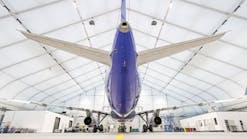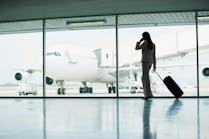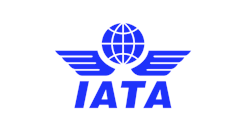Airports Turn to Agile Optimization Solutions to Address COVID-19 Demands
Today’s pandemic has introduced a myriad of new challenges and related tasks for airports that must be performed to help contain the spread of COVID-19, while maintaining operations in the “new normal.” In addition to regulatory mandates, there has been guidance from multiple industry associations on measures for airports to implement. On top of this, airports face pandemic-related disruptions that must be effectively managed. It is during these unsettling times that optimization software incorporating advanced technologies and predictive data analytics is proving to be a most effective antidote. An example for these advanced technologies is hybrid Artificial Intelligence (AI), which includes data-driven as well as knowledge-driven approaches. Machine Learning (ML) and predictive data analytics is a data-driven approach, Operations Research and optimization algorithms is a knowledge-driven approach. Both is helping airports maintain a safe environment for employees and passengers. AI also improves processes from “What if” planning and workforce scheduling, to aircraft maintenance as well as gate and stand management.
New Pandemic Protocols
In its “Information for Airport Sponsors Considering COVID-19 Restrictions or Accommodations,” the Federal Aviation Administration (FAA) provided guidance to airport operators on such issues as airport closures, requiring flights to land at certain airports for screening or quarantining passengers boarding or exiting planes, and closing terminal restaurant and retail operations. The FAA cited other compliance letters and also noted that specific requests regarding restrictions or accommodations would be evaluated on a case-by-case basis. The World Health Organization (WHO) published its “Operational considerations for managing COVID-19 cases or outbreak in aviation,” as Interim Guidance dated 18 March 2020. It provides airports with specific recommendations on how suspected cases of COVID-19 should be managed within the context of an airport public health contingency plan coordinated with the airports’ health authorities. It directs airports to manage cases “in accordance with the ICAO Annex 9 (Facilities required for implementation of public health measures) and the aerodrome emergency plan (ICAO Annex 14).”
In July, the U.S. Transportation Secretary Elaine L. Chao announced public health guidance to airlines and airports for the nation’s (United States’) air transportation system’s recovery from the coronavirus disease 2019 (COVID-19) public health emergency. Titled “Runway to Recovery,” it recommends both general and specific public health measures that airlines and airports should take to mitigate COVID-19 risks. Among the measures noted are: passenger and employee education, use of face masks, social distancing, enhanced disinfection and cleaning procedures, collecting passenger contact information for purposes of notification in case of suspected or confirmed COVID-19 exposure, and enhancing airport security checkpoint operations to reduce exposure. Guidance from the FAA, WHO and the “Runway to Recovery” are representative of the COVID-19 recommendations airports have been provided by various other government, health and industry entities. Implementing the recommended measures introduces new pain points and impacts on airport operations. Helping alleviate the pain are advanced technologies that support agile decision making, process improvements and the health and safety of aviation employees and passengers.
Safety First
Advanced software-based solutions are proving effective in helping airports quickly identify employees potentially affected by the SARS-CoV2 infection. These solutions are working in conjunction with other optimization software solutions, through which a Contact Tracer web-based application can utilize historical data relating to tasks being managed by the application. This enables airport management to determine which staff worked with other staff members, at what times, and in what locations. Equipped with this data, the Contact Tracer’s functionality can visualize an infected person’s history of contacts. This can be displayed as an on-demand report or in a standalone web application. The data then can be applied to make real-time operational adjustments including issuing a quarantine plan to isolate only potentially infected individuals, thereby facilitating staff adjustments, as needed, and avoiding large-scale isolations, which would have a more negative effect on operations.
To further contain the virus, a small, maintenance-free Bluetooth-based solution can be distributed to each staff member. Clipped onto an ID lanyard or clothing near the front of the body, it records each time two devices come into proximity of each other, exchanges their anonymous IDs, records them, and stores this exchange information for a predetermined period. If one of the device carriers tests positive for the SARS-CoV-2 infection, his/her device can be read, and the recorded contacts traced. The anonymous IDs can be mapped to real identities by authorized personnel, enabling strategic isolation procedures, confined only to those potentially infected, to be implemented promptly.
Aircraft Maintenance
The maintenance of the increasing number of parked aircraft at airports also demands special attention during the pandemic. If the aircraft is to return to service, scheduled maintenance programs must be upheld. Since these aircraft are not flying, the authorities have made exceptions to the routine daily or weekly checks. Among the agencies providing guidance in this area is the European Union Aviation Safety Agency (EASA).
Heightened logistical challenges to the maintenance function stemming from new pandemic-driven safety precautions within airports (e.g., social distancing, new barriers, procedural changes) also must be managed. The FAA issued its “Information for Operators (InFO) 20005,” which notifies operators of temporary changes to its policy on the use of short-term escalations (STEs) to manage scheduled maintenance requirements affected by the COVID-19 health emergency. It also provides information on increased flexibilities related to the use of STEs and how operators can request an FAA authorization to expand their use.
Optimization software helps address these exceptions, as well as unplanned maintenance tasks and the associated reassignment of staff to perform these tasks. Employees receive their assignments on their mobile devices where they can record their start and finish times. Applying rule-based functions to project maintenance workloads, the solutions help facilitate the planning of optimal work schedules, taking into account worker skills, personal time off, etc., and addressing “What if” scenarios that may affect workloads. This optimized planning and resource management, enhanced by predictive algorithms, is helping to drive significant productivity gains, adherence to service level agreements (SLAs), and maintenance cost reductions.
Managing the Expected … and Unexpected
Unquestionably, pandemic-related changes have prompted a host of irregular operations (IrOps) at airports. Faced with rule-based requirements, staff shortages, flight changes/cancellations, re-routing of passengers, and unexpected shifts in demand due to certain airports shutting down suddenly and/or regional lockdowns, airports are leveraging optimization software to gain increased situational awareness. This, in turn, can drive more agile and optimized decision-making. Real-time dashboards help reduce the negative impact of these IrOps by providing real-time access to critical information -- flight information, gate availability visible at a glance, crew and passenger connections in jeopardy, and delays in turnaround processes. The dashboard provides a real-time overview of key metrics such as: planned versus delayed flights; percentage graphic of departed, remaining and delayed flights; departure and arrival status; and full-day summaries of on-time, and remaining and delayed flights.
Other Areas Optimized by a Digital Approach
Intelligent software and digital technologies also help facilitate pandemic-related safety and operational efficiency in other areas. The allocation of gates, aircraft positions and terminal resources are supported along with alternative plans to address “What if” scenarios. Airports can continuously optimize their management of gates, stands, counters, baggage belts, etc. based on current flight information, while accommodating new requirements introduced as a result of the pandemic. Optimization software also helps airports in their social distancing goals within check-in counters and baggage drop and claim areas.
To further reduce the spread of the Coronavirus and restore passenger confidence in air travel, other technologies are being deployed by airports. These include biometrics such as facial, fingerprints and iris recognition to verify traveler identities, and self-serve kiosks to minimize potential infection and reduce waiting lines.
Developing Airport Resiliency
Harnessing the power of hybrid Artificial Intelligence (AI) including Machine Learning (ML) and predictive algorithms incorporated in today’s advanced optimization software can help airports build the level of resiliency so critical during times of massive upheaval. The global pandemic has upended the aviation industry like nothing else before. Airlines and airports are facing unprecedented hardships across operations, fiscal performance and human life. Given these circumstances, remaining strong is no easy task. However, with the proper technologies, backed by effective business continuity and emergency plans, the industry can regain its footing.
According to a May 2020 report from International Finance Corporation (IFC) titled, “The Impact of COVID-19 on Airports: An Analysis,” prior to the COVID-19 outbreak, the airport industry has steadily expanded in recent years due to increased growth in passenger air travel. The IFC noted that in 2019, total trips exceeded nine (9) billion; a 3.4% year-on-year increase. COVID-19 has altered that continued trajectory, with government-recommended warnings to avoid travel and close airports resulting in a 22.9% decrease in global air traffic in February 2020 and a 53.1% reduction in March 2020. These declines represented a reduction of 620 million passengers in the first quarter of 2020 alone. While governments have stepped in with financial assistance, and airline/airport cooperation has helped in the resuming of air travel, there remains a long road ahead to recovery. Optimistic projections are that traffic volumes may reach pre-COVID-19 levels by the end of 2021. Less optimistic projections, including those by the credit agencies, are predicting a 24-month recovery. Buoyed by optimization software, airports can move through the transition period with better resource planning, management and overall operational performance. They benefit from heightened operational awareness, real-time visibility of inconsistencies, management by exception and reduced impact from disruptions and the unexpected which have become commonplace during the pandemic.
Luis Alvarez is an IT Consultant, INFORM GmbH (Aachen, Germany) and a product management, market and sales support specialist in the areas of operations and hub control, line maintenance and ground handling.







